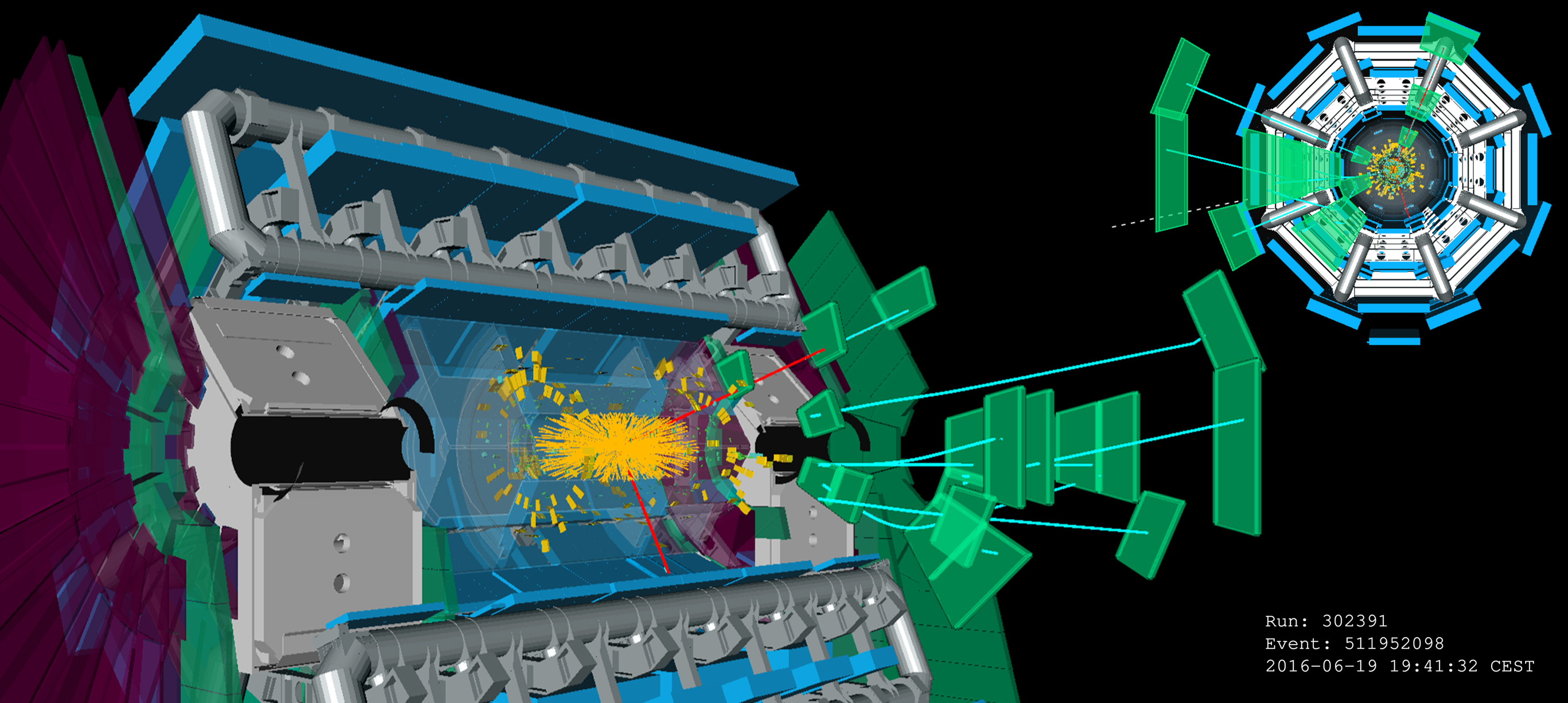Displaced but not unnoticed: ATLAS in pursuit of Long-Lived Particles
1 April 2025 | By
Despite its wide-ranging success, the Standard Model leaves some of the universe’s deepest mysteries unanswered. What is dark matter? Why does matter dominate over antimatter? Given how no beyond-the-Standard-Model phenomena have yet been observed at the Large Hadron Collider (LHC), a question naturally arises: are physicists searching in the right place?

Experiments at the LHC were designed based on the assumption that particles produced in a collision would decay near the interaction point. However, many extensions of the Standard Model predict the existence of long-lived particles (LLPs) that could travel several metres before decaying, leaving behind tracks that are “displaced” from the interaction point. Detecting LLPs is challenging due to their feeble interactions and unconventional decay signatures, requiring innovative reconstruction and analysis strategies. Conversely, their unique signatures also offer exciting discovery opportunities.
In a new study submitted to Physical Review D, scientists at the ATLAS experiment leveraged the muon spectrometer’s size and precision tracking capabilities to search for neutral LLPs by identifying displaced decay vertices (DVs). The team analysed the full LHC Run 2 dataset (collected 2015–2018), searching for collision events with a single DV in the muon spectrometer and isolated from activity in other detector subsystems. They used a specialized vertex reconstruction algorithm to infer the point of origin of hadronic jets, a collimated spray of particles, emanating from the LLP decay.
Long-lived particles are challenging to detect, due to their feeble interactions and unconventional decay signatures. Conversely, those very traits also offer exciting opportunities for discovery.

The results were interpreted through two scenarios: one where the LLP is produced with a Standard Model Z boson, and one where it is not. The first scenario includes a search for an axion-like particle (ALP) – a theoretical particle tied to an additional fundamental symmetry in the Universe. The second scenario explores a new-physics model where the Higgs boson would act as a gateway to an undiscovered sector of particles and would decay into a pair of LLPs.
This new study marks a significant leap forward. Unlike previous analyses, which focused on collision events with two vertices or used only a subset of the Run 2 dataset, ATLAS’ new result explores a wider range of particle lifetimes (see Figure 1). In addition to leveraging machine-learning techniques to distinguish LLP signals from Standard-Model backgrounds, this analysis also extends the sensitivity to include single LLP production mechanisms compared to previous iterations. While the study did not reveal an excess of events indicative of LLPs, the team significantly improved exclusion limits for various LLP benchmark models, covering proper decay lengths up to 1000m. For ALPs, the most stringent ATLAS exclusion limits were set for proper decay lengths exceeding 20cm (see Figure 2).
Given the rarity of LLP interactions, the growing dataset from Run 3 and beyond offers promising opportunities for discovery. Enhanced by hardware and software upgrades and innovative analysis approaches, the ATLAS Collaboration is well-positioned to push the boundaries of particle physics at the highest energies.
Learn more
- Search for events with one displaced vertex from long-lived neutral particles decaying into hadronic jets in the ATLAS muon spectrometer in proton-proton collisions at 13 TeV (arxiv:2503.20445, see figures)
- Moriond EW 2025 presentation by Sagar Addepalli: Searches for displaced signatures at LHC
- Search for long-lived particles produced in proton-proton collisions at 13 TeV that decay into displaced hadronic jets in the ATLAS muon spectrometer (Phys. Rev. D 99 (2019) 052005, arXiv:1811.07370, see figures)
- Search for events with a pair of displaced vertices from long-lived neutral particles decaying into hadronic jets in the ATLAS muon spectrometer in proton-proton collisions at 13 TeV (Phys. Rev. D 106 (2022) 032005, arXiv:2203.00587, see figures)
- Search for light long-lived particles in proton-proton collisions at 13 TeV using displaced vertices in the ATLAS inner detector (Phys. Rev. Lett. 133 (2024) 161803, arXiv:2403.15332, see figures)
- Search for neutral long-lived particles that decay into displaced jets in the ATLAS calorimeter in association with leptons or jets using proton-proton collisions at 13 TeV (JHEP 11 (2024) 036, arXiv:2407.09183, see figures)
- ATLAS chases long-lived particles with the Higgs boson, Physics Briefing, June 2024




